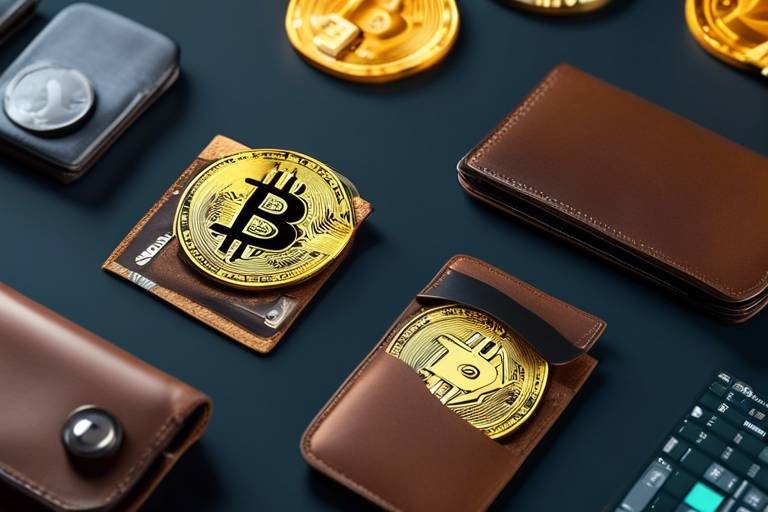How to Create a Wallet for Your Crypto Investments
In the ever-evolving world of cryptocurrency, one of the first steps you should take as an investor is to create a wallet. But why is this so crucial? Think of a cryptocurrency wallet as a digital safe where you can store your valuable assets securely. Just like you wouldn’t keep your cash under a mattress, you shouldn’t leave your cryptocurrencies unprotected. This article provides a comprehensive guide on how to create a wallet for your cryptocurrency investments, covering different types, security measures, and tips for effective management.
Before diving into the nitty-gritty of creating a wallet, it’s essential to grasp the fundamental concepts behind cryptocurrency wallets. At its core, a cryptocurrency wallet is a software program that allows you to store and manage your digital currency. It doesn’t actually store the currency itself; instead, it holds the keys that give you access to your assets on the blockchain. Imagine it as a keychain that holds all the keys to your various properties. The purpose of a wallet is to facilitate transactions, enabling you to send and receive cryptocurrencies seamlessly.
There are several types of wallets available to investors in the digital currency space. These wallets can vary in terms of security, convenience, and accessibility. Some wallets are designed for long-term storage, while others are more suited for daily transactions. Understanding these differences is crucial for making informed decisions about where to keep your crypto assets.
Now that we have a basic understanding of what cryptocurrency wallets are, let’s delve into the various types available. Each type has its own set of advantages and disadvantages, and the right choice depends on your specific needs and preferences.
Hardware wallets are physical devices specifically designed to securely store your cryptocurrencies offline. Think of them as a USB drive for your digital assets. The key benefit of hardware wallets is their enhanced protection against online threats and hacks. Since they are not connected to the internet, they are far less vulnerable to cyber attacks. This makes them an excellent choice for long-term storage of significant amounts of cryptocurrency.
There are several popular hardware wallets available in the market today. Here’s a quick overview of some of them:
| Wallet | Features | Price |
|---|---|---|
| Ledger Nano S | Compact, supports multiple currencies | $59 |
| Trezor Model T | Touchscreen, user-friendly interface | $219 |
| KeepKey | Large screen, simple setup | $49 |
Setting up a hardware wallet is a straightforward process. Here’s a step-by-step guide:
- Purchase your hardware wallet from a reputable source.
- Connect the wallet to your computer or mobile device.
- Follow the on-screen instructions for initial configuration.
- Secure your recovery phrase in a safe place; this is crucial for recovering your wallet if it’s lost.
- Transfer your cryptocurrencies to your new wallet.
Software wallets are applications that can be downloaded on your mobile or desktop devices. They come in various forms, including mobile wallets, desktop wallets, and web wallets. While software wallets offer convenience and accessibility, they also come with certain security risks. If you’re frequently trading or using cryptocurrencies, software wallets may be a practical choice, but it’s essential to keep security measures in mind.
When it comes to selecting the most suitable wallet for your needs, consider the following factors:
- Security: How well does the wallet protect your assets?
- Ease of Use: Is the wallet user-friendly, especially for beginners?
- Supported Cryptocurrencies: Does it support the types of cryptocurrencies you plan to store?
Implementing essential security measures is crucial when using cryptocurrency wallets. Here are some best practices to follow:
- Enable two-factor authentication for an additional layer of security.
- Keep your wallet software up to date to protect against vulnerabilities.
- Regularly back up your wallet and keep your recovery phrase secure.
Managing your cryptocurrency wallet effectively is key to tracking your investments and making transactions. Regularly monitor your assets, keep an organized record of your transactions, and stay informed about market trends. By maintaining an organized approach, you can make informed decisions and maximize your investment potential.
Q1: What is the safest type of wallet for cryptocurrency?
A hardware wallet is generally considered the safest option for storing cryptocurrencies long-term.
Q2: Can I use multiple wallets?
Absolutely! Many investors use multiple wallets to diversify their holdings and enhance security.
Q3: How do I recover my wallet if I lose my recovery phrase?
If you lose your recovery phrase, it may be impossible to recover your wallet. Always store it securely.
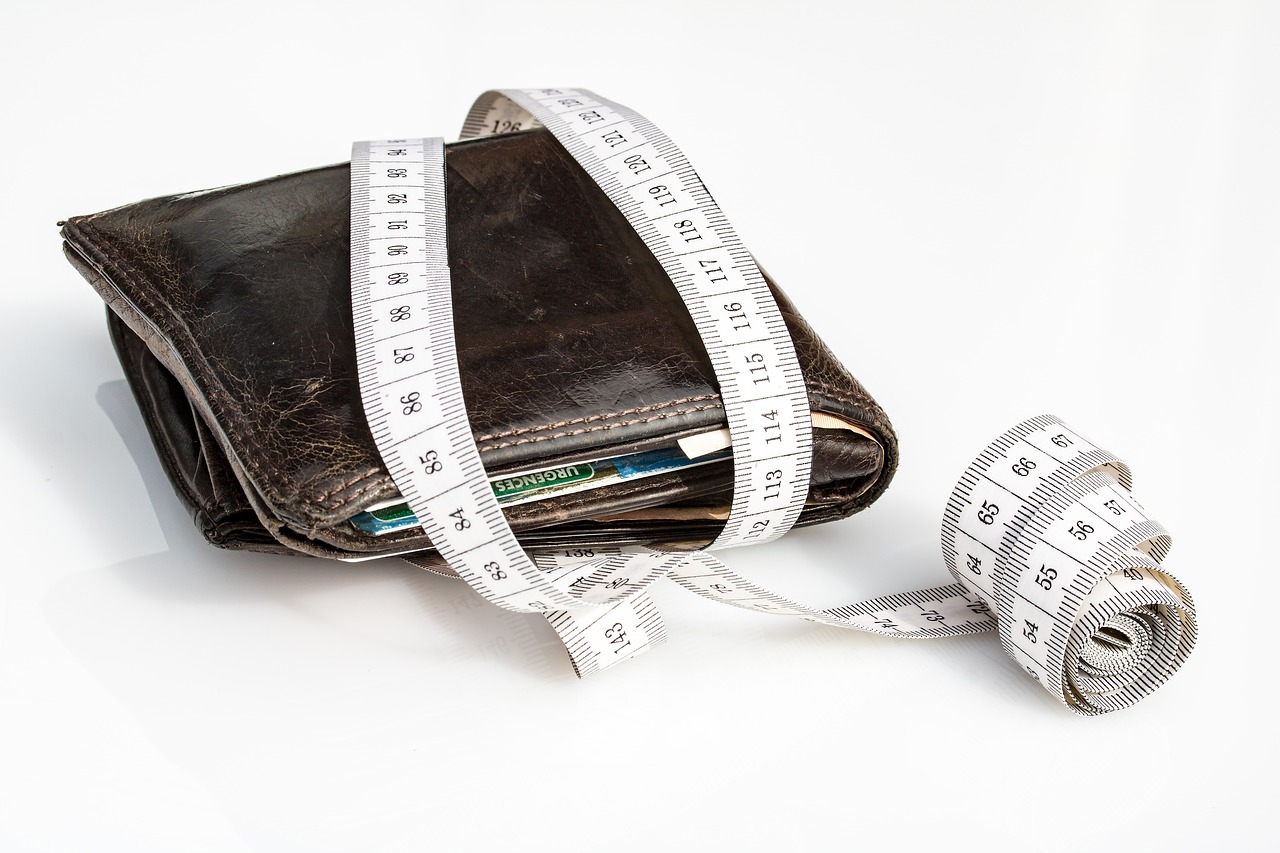
Understanding Cryptocurrency Wallets
When diving into the world of cryptocurrency, one of the first things you'll encounter is the concept of a cryptocurrency wallet. But what exactly is it? In simple terms, a cryptocurrency wallet is a digital tool that allows you to store, send, and receive cryptocurrencies. Think of it like a bank account, but instead of holding dollars or euros, it holds digital currencies like Bitcoin, Ethereum, and many others. The wallet doesn’t actually store your coins; rather, it stores the private and public keys that are essential for managing your cryptocurrencies.
So, how does a cryptocurrency wallet work? Well, every time you make a transaction, your wallet uses these keys to sign off on it. The public key is like your bank account number; you can share it with others so they can send you money. On the other hand, the private key is akin to your PIN or password—it's crucial to keep this secure because anyone with access to it can control your funds. This is why understanding the intricacies of wallets is vital for anyone looking to invest in digital currencies.
Cryptocurrency wallets come in various shapes and sizes, each designed to cater to different needs and preferences. They can be broadly categorized into hot wallets and cold wallets. Hot wallets are connected to the internet, making them convenient for everyday transactions. However, they also come with heightened risks of hacking. Cold wallets, on the other hand, are offline storage solutions, providing enhanced security against online threats. This dichotomy is crucial to grasp, as it helps you make informed decisions based on your risk tolerance and investment strategy.
Moreover, within these categories, there are several types of wallets: from hardware wallets, which are physical devices that securely store your keys, to software wallets, which can be applications on your computer or mobile device. Each type has its own advantages and disadvantages, and understanding these can significantly impact your investment experience. For instance, while hardware wallets are generally more secure, they may not be as convenient for quick transactions compared to software wallets.
In summary, understanding cryptocurrency wallets is the first step in safeguarding your digital investments. By grasping how they operate and the different types available, you can choose the right wallet that aligns with your investment goals and security needs. As you embark on your crypto journey, remember that the right wallet can make all the difference—it's your gateway to the world of digital currencies.

Types of Wallets
When it comes to managing your cryptocurrency investments, understanding the different available is crucial. Each type of wallet serves a unique purpose and comes with its own set of advantages and disadvantages. Whether you're a casual investor or a serious trader, knowing your options can significantly impact your overall experience in the crypto space.
At a high level, cryptocurrency wallets can be categorized into three main types: hardware wallets, software wallets, and paper wallets. Each type has its own characteristics that make it suitable for different user needs. Let's dive into each of these wallet types to help you understand which one might be the best fit for you.
Hardware wallets are physical devices designed specifically to store cryptocurrencies securely. They are often seen as the gold standard for crypto storage due to their ability to keep your private keys offline, away from potential online threats. Imagine your hardware wallet as a safe deposit box for your digital assets—it's secure, reliable, and not easily accessible to hackers.
However, while hardware wallets offer enhanced security, they can be a bit pricier compared to other options. But think of it this way: investing in a hardware wallet is like buying insurance for your investments. The peace of mind it provides is often worth the cost. Some popular hardware wallets include:
| Wallet Name | Price | Key Features |
|---|---|---|
| Trezor Model T | $219 | Touchscreen, supports multiple currencies, open-source |
| Ledger Nano X | $149 | Bluetooth enabled, supports over 1,800 cryptocurrencies |
| KeepKey | $49 | Large display, integrated ShapeShift exchange |
On the other hand, software wallets are applications that can be installed on your computer or mobile device. They are more convenient and user-friendly, making them ideal for everyday transactions. However, the convenience comes with a trade-off in security. Software wallets can be vulnerable to malware and hacking attempts, especially if your device is compromised.
There are two main types of software wallets: desktop wallets and mobile wallets. Desktop wallets are installed on your computer, offering a higher level of security than mobile wallets, which are often used for quick transactions on-the-go. If you plan to make regular trades or purchases, a software wallet may be the right choice for you, but always remember to take necessary precautions.
Lastly, we have paper wallets, which are essentially just a piece of paper that contains your public and private keys. While they may sound archaic, they can be an incredibly secure option if created and stored properly. Think of a paper wallet as a treasure map; if you keep it safe, you can access your crypto treasures anytime. However, if you lose that paper or it gets damaged, your funds are gone!
In summary, choosing the right type of wallet depends on your individual needs and how you plan to use your cryptocurrencies. Whether you prioritize security, convenience, or a balance of both, understanding these wallet types is the first step in effectively managing your digital assets.
- What is the safest type of wallet? Hardware wallets are generally considered the safest option for storing cryptocurrencies.
- Can I use multiple wallets? Absolutely! Many investors use a combination of wallet types for different purposes.
- What happens if I lose my hardware wallet? If you lose your hardware wallet, you can recover your funds using your recovery phrase, provided you have kept it secure.
- Are software wallets safe? Software wallets are convenient but can be vulnerable to online threats. Always ensure your device is secure and updated.
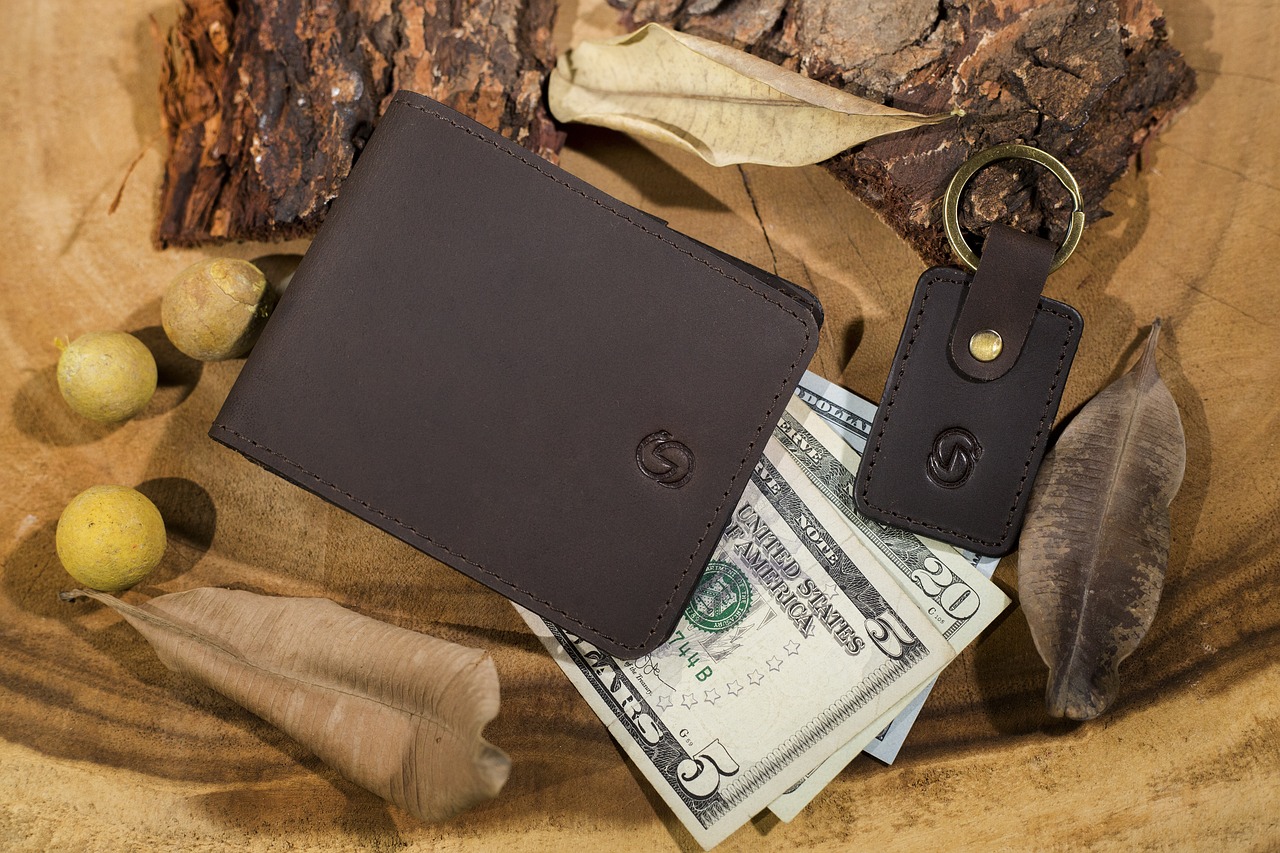
Hardware Wallets
When it comes to safeguarding your digital assets, stand out as one of the most secure options available. Think of a hardware wallet as a safe for your cryptocurrencies—it's a physical device that stores your private keys offline, away from the prying eyes of hackers and malware. By keeping your keys offline, hardware wallets provide an enhanced layer of security, making it significantly harder for cybercriminals to access your funds.
One of the most appealing aspects of hardware wallets is their user-friendly design. Most models come equipped with a simple interface that allows you to easily manage your cryptocurrencies without diving deep into the technical aspects. Imagine being able to hold your digital fortune in your hands, with the peace of mind that comes from knowing it’s locked away in a fortress of technology.
However, it’s essential to understand that while hardware wallets are incredibly secure, they are not entirely foolproof. Like any other technology, they come with their own set of risks. For instance, if you lose your hardware wallet or it gets damaged, you could potentially lose access to your cryptocurrencies forever unless you have backed up your recovery phrase. This phrase is crucial, as it acts as a key to your safe, allowing you to restore your wallet on another device if needed. Always remember: backing up your recovery phrase is non-negotiable!
Now, let’s dive deeper into the benefits of using hardware wallets:
- Enhanced Security: Since they store your keys offline, they are immune to online hacking attempts.
- Control Over Your Assets: You have full control over your private keys, meaning you are not reliant on third-party services.
- Multi-Currency Support: Many hardware wallets support a variety of cryptocurrencies, allowing you to manage different assets in one place.
In summary, hardware wallets are a fantastic choice for anyone serious about protecting their cryptocurrency investments. They combine security with usability, making them an ideal solution for both beginners and seasoned investors alike. Just remember, with great power comes great responsibility—always take the necessary precautions to secure your wallet and your recovery phrase.
Let’s take a quick look at some of the most popular hardware wallets on the market today:
| Wallet Name | Features | Price Range |
|---|---|---|
| Trezor Model T | Touchscreen, supports multiple currencies, open-source | $219 - $249 |
| Ledger Nano X | Bluetooth connectivity, supports over 1,500 coins, mobile app | $149 - $199 |
| SafePal S1 | Air-gapped security, supports multiple currencies, affordable | $49 - $69 |
Choosing the right hardware wallet depends on your specific needs, such as the types of cryptocurrencies you hold and your budget. Take your time to research and select a wallet that aligns with your investment strategy.
Setting up a hardware wallet is generally straightforward. Here’s a quick overview of the steps you’ll need to follow:
- Purchase your hardware wallet from a reputable source.
- Follow the manufacturer’s instructions to install the necessary software.
- Create a new wallet and securely write down your recovery phrase.
- Transfer your cryptocurrencies from exchanges or other wallets to your hardware wallet.
By following these steps, you’ll be well on your way to securing your cryptocurrency investments with a hardware wallet.
Q1: Are hardware wallets completely safe?
A: While hardware wallets provide excellent security, they are not entirely immune to risks such as physical theft or loss. Always back up your recovery phrase.
Q2: Can I use a hardware wallet with my phone?
A: Yes, many hardware wallets offer mobile compatibility, allowing you to manage your assets on the go.
Q3: How do I choose the best hardware wallet for me?
A: Consider factors like security features, supported cryptocurrencies, user interface, and price when selecting a wallet.
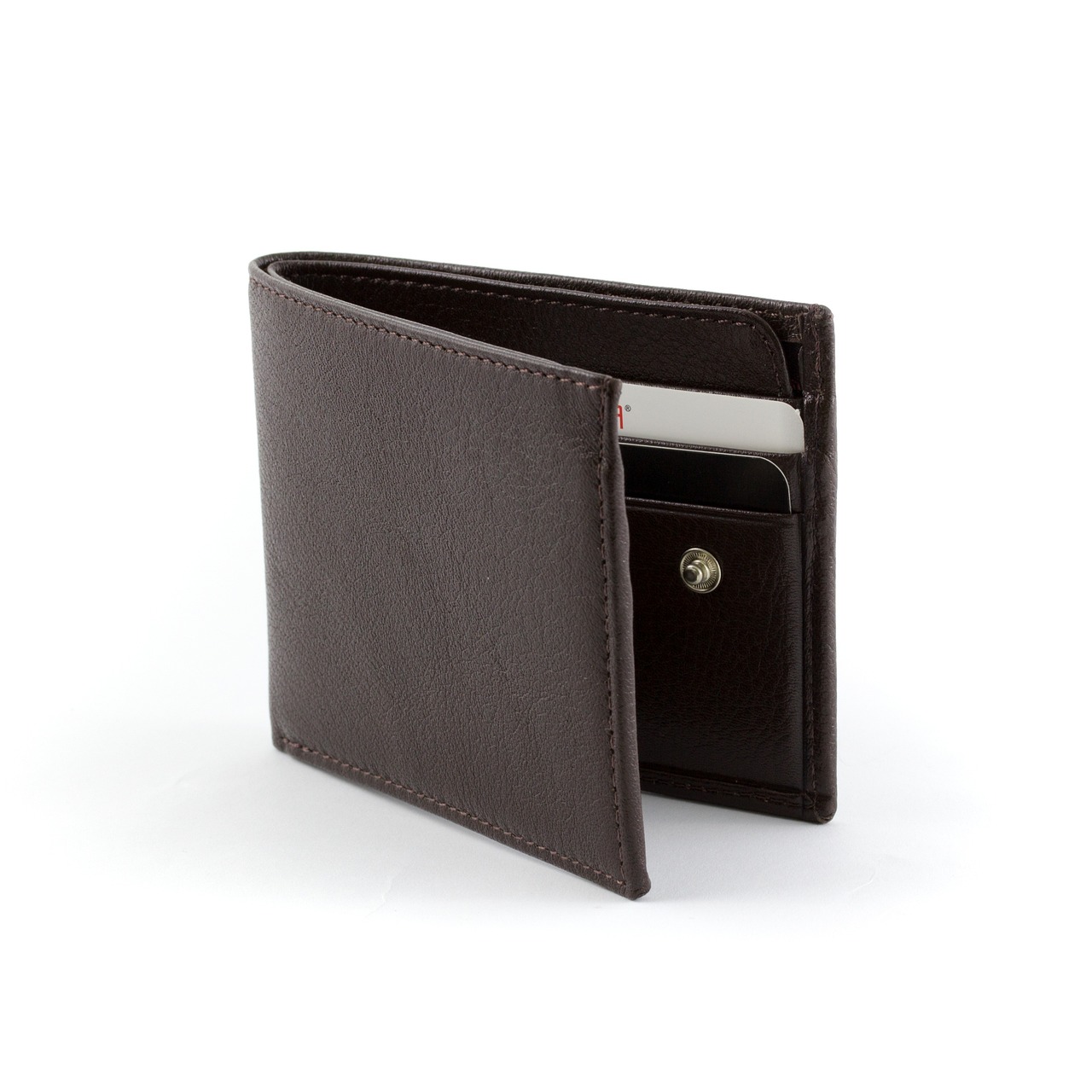
Popular Hardware Wallets
When it comes to safeguarding your cryptocurrencies, choosing the right hardware wallet is crucial. These devices are designed to store your digital assets offline, providing a robust layer of security against cyber threats. Let’s dive into some of the most popular hardware wallets available today, each offering unique features tailored to different user needs.
One of the standout options is the Trezor Model T. This wallet is known for its user-friendly interface and advanced security features. It supports a wide range of cryptocurrencies, making it a versatile choice for investors. The touchscreen display enhances the user experience, allowing for easy navigation through settings and transactions. Additionally, the Trezor Model T provides a recovery seed feature, ensuring that you can restore your wallet in case of loss or damage.
Another popular choice is the Ledger Nano X. This wallet stands out due to its Bluetooth capability, allowing users to manage their assets directly from their mobile devices. It boasts a sleek design and can store over 1,800 different cryptocurrencies. Security is paramount with the Ledger Nano X, as it incorporates a secure element chip, providing top-notch protection for your private keys. The Ledger Live app further simplifies the management of your crypto portfolio, enabling easy transactions and balance checks.
If you’re looking for a more budget-friendly option, the Ledger Nano S is a great alternative. While it may lack some of the advanced features of its counterpart, the Nano X, it still offers excellent security and supports a wide array of cryptocurrencies. The Ledger Nano S is compact and portable, making it a perfect companion for investors who are always on the go. Just like the Nano X, it also utilizes the Ledger Live app for seamless management of your digital assets.
| Wallet | Key Features | Price Range |
|---|---|---|
| Trezor Model T | User-friendly touchscreen, supports many cryptocurrencies, recovery seed feature | $219 |
| Ledger Nano X | Bluetooth connectivity, supports over 1,800 cryptocurrencies, secure element chip | $149 |
| Ledger Nano S | Compact design, supports many cryptocurrencies, affordable | $59 |
Each of these wallets has its own set of advantages and disadvantages. When choosing a hardware wallet, consider factors such as security, convenience, and the specific cryptocurrencies you plan to store. It’s essential to do your research and select a wallet that aligns with your investment strategy and personal preferences. Remember, the right wallet can make a significant difference in the safety of your digital assets!
In summary, whether you opt for the Trezor Model T, Ledger Nano X, or Ledger Nano S, each of these hardware wallets provides a secure and effective way to manage your cryptocurrencies. The peace of mind that comes with knowing your investments are protected is invaluable in today’s digital landscape.
Q: What is a hardware wallet?
A: A hardware wallet is a physical device designed to securely store your cryptocurrency offline, protecting it from online threats.
Q: Are hardware wallets safe?
A: Yes, hardware wallets are considered one of the safest ways to store cryptocurrencies, as they keep your private keys offline and away from potential hackers.
Q: Can I use multiple hardware wallets?
A: Absolutely! Many investors use multiple hardware wallets to diversify their storage and enhance security.
Q: What happens if I lose my hardware wallet?
A: Most hardware wallets come with a recovery seed that allows you to restore your wallet and access your funds, even if the device is lost or damaged.

Setting Up a Hardware Wallet
Setting up a hardware wallet is an essential step for anyone serious about securing their cryptocurrency investments. The process may seem daunting at first, but with a little guidance, you'll find it straightforward and rewarding. First, ensure you purchase your hardware wallet from a reputable source. This is crucial because buying from an untrustworthy vendor can expose you to risks, including tampered devices that could compromise your funds.
Once you have your hardware wallet in hand, it’s time to dive into the setup process. Begin by connecting the wallet to your computer or mobile device. Most hardware wallets come with a USB cable or Bluetooth capability, making them easy to connect. After plugging it in, follow the on-screen instructions that will guide you through the initialization process. This typically includes creating a new wallet and setting a secure PIN. Your PIN acts as a protective barrier, so choose something memorable yet complex enough to thwart potential hackers.
Now, here comes one of the most critical steps: securing your recovery phrase. During the setup, your wallet will generate a recovery phrase, usually consisting of 12 to 24 random words. This phrase is your lifeline; if your wallet gets lost, damaged, or stolen, this is the only way to recover your funds. Write it down on paper and store it in a safe place—never save it digitally, as this could expose you to hacking risks. Think of this phrase as the key to your treasure chest; if you lose it, you may never see your treasure again!
After securing your recovery phrase, the next step is to transfer your cryptocurrencies into your new hardware wallet. This can be done by following the instructions provided by the wallet manufacturer, which typically involves generating a receiving address and using it to send your crypto from exchanges or other wallets. Always double-check the address before confirming any transactions, as sending funds to the wrong address can result in irreversible loss.
Finally, it's wise to perform a test transaction with a small amount of cryptocurrency before making larger transfers. This not only verifies that everything is functioning correctly but also gives you a chance to familiarize yourself with the wallet’s interface. Once you’re comfortable with the setup and transaction process, you can rest easy knowing your digital assets are secured in a robust hardware wallet.
- What is a hardware wallet? A hardware wallet is a physical device designed to securely store your cryptocurrencies offline, protecting them from online threats.
- Is it safe to set up a hardware wallet? Yes, as long as you follow best practices, such as purchasing from reputable sources and securing your recovery phrase.
- Can I recover my wallet if I lose my hardware device? Yes, if you have your recovery phrase, you can restore your wallet on a new device.
- How do I know my hardware wallet is secure? Look for wallets that offer strong encryption, two-factor authentication, and regular firmware updates.

Software Wallets
When it comes to managing your cryptocurrency, are often the go-to choice for many investors. Why? Because they blend convenience with functionality, allowing users to access their digital assets with just a few clicks. Software wallets are applications that can be installed on your computer or smartphone, making them incredibly accessible. Imagine having your entire crypto portfolio right in your pocket or at your fingertips on your desktop; that’s the allure of software wallets!
There are two primary types of software wallets: desktop wallets and mobile wallets. Desktop wallets are installed on your computer, providing a robust option for those who prefer a more stationary solution. They often offer greater security compared to mobile wallets since they aren’t constantly connected to the internet, reducing exposure to online threats. However, they can be vulnerable to malware if your computer is compromised.
On the other hand, mobile wallets are designed for on-the-go users. They allow you to make transactions quickly and easily, which is perfect for those who frequently trade or use their cryptocurrencies for everyday purchases. However, the convenience of mobile wallets comes with its own set of risks, as they are more susceptible to hacks and phishing attacks. It’s like carrying a wallet full of cash; while it’s handy, you need to be cautious about where you take it.
One of the most appealing aspects of software wallets is their user-friendly interfaces. Most wallets come with intuitive designs that make it easy for even the most novice users to navigate. Additionally, many software wallets support a wide range of cryptocurrencies, allowing you to manage multiple assets from a single application. However, it’s essential to do your research on the specific wallet you choose, as some may have hidden fees or limitations on the types of coins you can store.
Here’s a quick comparison of some popular software wallets:
| Wallet Name | Type | Supported Coins | Security Features |
|---|---|---|---|
| Exodus | Desktop & Mobile | Multiple | Backup & Recovery, Encrypted Private Keys |
| Mycelium | Mobile | Bitcoin & Ethereum | HD Wallet, Local Key Storage |
| Atomic Wallet | Desktop & Mobile | Multiple | Backup & Recovery, Encrypted Private Keys |
While software wallets offer great convenience, it’s crucial to remember that they are not foolproof. Always ensure you are downloading wallets from official sources to avoid scams and potential loss of funds. Additionally, consider implementing extra security measures, such as two-factor authentication and regular updates, to keep your assets safe.
In conclusion, software wallets are an excellent option for anyone looking to dive into the world of cryptocurrency. They provide a perfect balance of accessibility and functionality, making them suitable for both beginners and seasoned investors alike. Just remember to stay vigilant and prioritize security as you navigate your crypto journey!
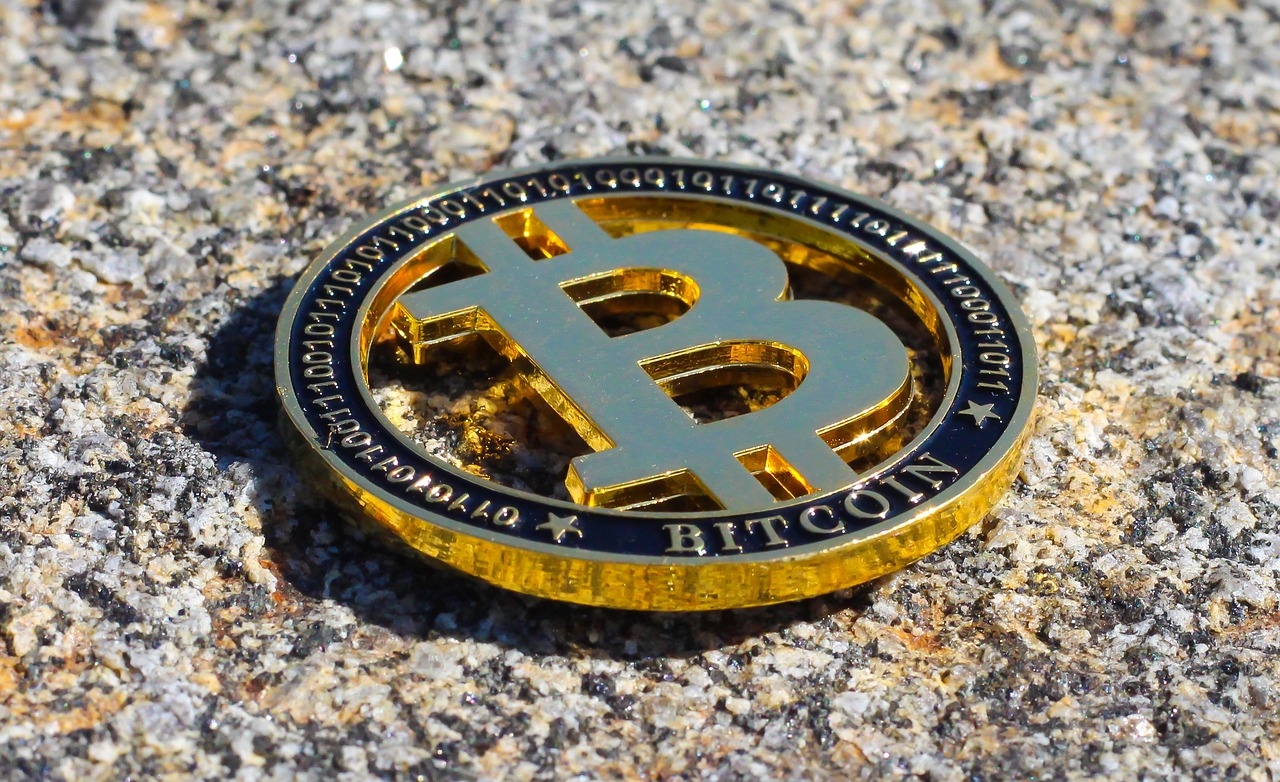
Choosing the Right Wallet
When it comes to investing in cryptocurrencies, one of the most crucial decisions you'll make is choosing the right wallet. Just like you'd pick a safe place to store your valuable possessions, selecting the appropriate wallet is vital for keeping your digital assets secure. But how do you determine which wallet is best for your needs? Let’s dive into some key considerations that will help you make an informed choice.
First and foremost, think about the type of cryptocurrencies you plan to store. Different wallets support different coins, so if you have a diverse portfolio, ensure your chosen wallet can accommodate all your assets. For instance, some wallets are designed specifically for Bitcoin, while others support a wider range of altcoins. This is akin to choosing a backpack that fits all your travel essentials—if it’s too small, you’ll leave important items behind!
Next, consider the security features of the wallet. In the digital world, security is paramount. Look for wallets that offer features such as two-factor authentication, multi-signature support, and strong encryption methods. These features act as layers of protection, much like a multi-lock system on your front door, ensuring that only you can access your assets. Additionally, check if the wallet has a good reputation in the crypto community. User reviews and expert opinions can provide valuable insights into its reliability.
Another important factor is ease of use. If you're new to cryptocurrency, a wallet with a user-friendly interface can make your experience much smoother. You don’t want to feel overwhelmed by complicated features or jargon when you’re just starting out. Look for wallets that offer intuitive designs and comprehensive customer support. A wallet that feels like a friendly guide on your crypto journey is always a plus!
Moreover, think about the accessibility of the wallet. Do you prefer having your assets readily available on your mobile device, or do you feel safer with a hardware wallet that keeps your coins offline? Each option has its pros and cons. Software wallets provide convenience and quick access to your funds, but they can be more susceptible to hacks. On the other hand, hardware wallets offer enhanced security but may require a bit more effort to access your assets. It’s a balancing act between convenience and security, much like deciding between a cozy home and a secure fortress.
Lastly, evaluate the cost associated with the wallet. While some wallets are free, others may charge fees for transactions or require an upfront purchase. It’s essential to weigh these costs against the features and benefits offered. Sometimes, investing a little more in a high-quality wallet can save you from potential losses in the future.
In summary, choosing the right wallet is a multifaceted decision that involves evaluating the types of cryptocurrencies you own, security features, user-friendliness, accessibility, and costs. By taking the time to analyze these factors, you’ll be well on your way to selecting a wallet that not only meets your needs but also enhances your overall cryptocurrency experience.
- What is the safest type of wallet? Hardware wallets are generally considered the safest option for storing cryptocurrencies due to their offline storage capabilities.
- Can I use multiple wallets? Absolutely! Many investors use multiple wallets to diversify their security and manage different types of cryptocurrencies.
- How do I recover my wallet if I lose access? Most wallets provide a recovery phrase during setup. Keep this phrase secure, as it can help you regain access to your funds if needed.

Security Best Practices
When it comes to cryptocurrency, security should be your top priority. Think of your digital assets as a treasure chest; if you don’t lock it up properly, anyone can waltz in and take what’s yours! To keep your wallet secure, there are several best practices you should follow. First and foremost, enabling two-factor authentication (2FA) is a must. This adds an extra layer of security by requiring not just your password, but also a second form of verification, like a text message or an authentication app. It’s like having a two-lock system on your front door—much harder for intruders to bypass!
Another critical aspect is to keep your wallet software updated. Just like you wouldn’t ignore software updates on your smartphone, you shouldn’t ignore them on your crypto wallet. Updates often contain security patches that protect you from vulnerabilities. Imagine driving a car with outdated brakes—would you feel safe? Probably not! Regular updates ensure that your wallet is equipped to defend against the latest threats.
Backing up your wallet is another essential practice. It’s like having a spare key to your house; if you lose the original, you still have access. Make sure to create a secure backup of your wallet’s recovery phrase and store it in a safe place, away from prying eyes. This way, if something goes wrong, you can restore your wallet and recover your funds.
Additionally, be cautious about phishing attacks. Cybercriminals often impersonate legitimate services to trick you into giving away your private keys or passwords. Always double-check URLs and never click on suspicious links. It’s akin to receiving a phone call from someone claiming to be your bank; you’d want to verify their identity before sharing any personal information, right?
Lastly, consider using a hardware wallet for long-term storage of your cryptocurrencies. These devices keep your private keys offline, which makes them far less susceptible to online threats. Think of it as keeping your gold bars in a safe instead of under your bed. While hardware wallets may require a bit more effort to set up, the peace of mind they provide is well worth it.
Here are some common questions that people have regarding security best practices for cryptocurrency wallets:
- What is two-factor authentication? Two-factor authentication (2FA) is a security process that requires two different forms of identification before granting access to your account.
- How often should I update my wallet software? You should update your wallet software as soon as updates are available to ensure you have the latest security features and patches.
- What should I do if I suspect a phishing attack? If you suspect a phishing attack, do not click on any links and report the incident to your wallet provider immediately.
- Are hardware wallets worth the investment? Yes, hardware wallets provide an extra layer of security by keeping your private keys offline, making them an excellent choice for long-term storage.

Managing Your Wallet
Managing your cryptocurrency wallet effectively is crucial for ensuring the safety and growth of your digital investments. Just like a bank account needs regular monitoring, your crypto wallet requires your attention to keep it secure and organized. In this digital age, where cyber threats lurk around every corner, it's essential to adopt a proactive approach to wallet management. So, how do you navigate this complex landscape? Let’s dive in!
First and foremost, tracking your investments is key. Keeping an eye on the performance of your cryptocurrencies can help you make informed decisions. You can use various tools and apps designed for this purpose. Some wallets even come with built-in tracking features that provide real-time updates on your asset values. Imagine having a financial dashboard right at your fingertips, showing you how your investments are faring in the ever-changing crypto market!
When it comes to making transactions, always double-check the details before hitting that send button. A small mistake can lead to significant losses. It's similar to sending a letter; if you get the address wrong, it won’t reach the intended recipient. Ensure that you verify the recipient's address and the amount you wish to send. Additionally, consider using transaction fees wisely. Some wallets allow you to adjust these fees based on how quickly you want your transaction to be processed. This can be particularly useful during times of network congestion.
Another vital aspect of wallet management is maintaining an organized record of your digital assets. This can be achieved through regular backups and keeping detailed records of your transactions. You might want to create a simple spreadsheet to log your transactions, including dates, amounts, and the purpose of each transaction. This not only helps you stay organized but also aids in tax reporting. Remember, the IRS is keeping an eye on crypto transactions, so it’s better to be prepared!
Lastly, consider setting up alerts for significant price changes. Many wallets and crypto tracking apps offer notification features that can alert you when your investments hit certain price points. This is akin to having a personal assistant who nudges you when it's time to buy or sell. By staying informed, you can seize opportunities as they arise and avoid potential pitfalls.
- How often should I check my wallet?
It’s a good idea to check your wallet regularly, especially if you’re actively trading. For long-term holders, checking once a week or month may suffice. - What should I do if I lose my recovery phrase?
Unfortunately, losing your recovery phrase can mean losing access to your wallet permanently. Always store it in a secure, offline location. - Can I manage multiple wallets easily?
Yes! Many wallet management apps allow you to oversee multiple wallets in one place, making it easier to track all your investments.
Frequently Asked Questions
- What is a cryptocurrency wallet?
A cryptocurrency wallet is a digital tool that allows you to store, send, and receive cryptocurrencies. Think of it like a bank account, but instead of holding traditional money, it holds digital currencies. Wallets can be software-based (like apps or programs) or hardware-based (physical devices).
- What are the different types of cryptocurrency wallets?
There are mainly three types of wallets: hardware wallets, software wallets, and paper wallets. Hardware wallets are physical devices that store your cryptocurrencies offline, making them very secure. Software wallets can be mobile or desktop applications that are more convenient but may have security risks. Paper wallets are simply printed pieces of paper that contain your keys, which are also secure if stored properly.
- How do I choose the right wallet for my needs?
Choosing the right wallet depends on several factors: your security needs, the types of cryptocurrencies you plan to store, and how often you plan to access your wallet. If you’re looking for maximum security, a hardware wallet is a great choice. If you need quick access for daily transactions, a software wallet might be more suitable.
- Are hardware wallets really secure?
Absolutely! Hardware wallets are considered one of the safest ways to store cryptocurrencies because they keep your private keys offline. This means they are less susceptible to hacks and malware compared to online wallets. Just remember to keep your recovery phrase safe, as losing it can mean losing access to your funds.
- Can I use multiple wallets for my cryptocurrencies?
Yes, many people use multiple wallets to manage their cryptocurrencies effectively. You might choose a hardware wallet for long-term storage and a software wallet for everyday transactions. This way, you can balance security and convenience based on your needs.
- What security measures should I take when using a crypto wallet?
To keep your wallet secure, enable two-factor authentication, regularly update your software, and back up your wallet. Additionally, be cautious of phishing scams and only use trusted platforms to buy or trade cryptocurrencies.
- How do I manage my cryptocurrency investments?
Managing your investments involves regularly tracking your portfolio, keeping records of transactions, and staying informed about market trends. Use tools or apps that help you monitor your investments easily, and ensure that you make informed decisions based on your financial goals.

